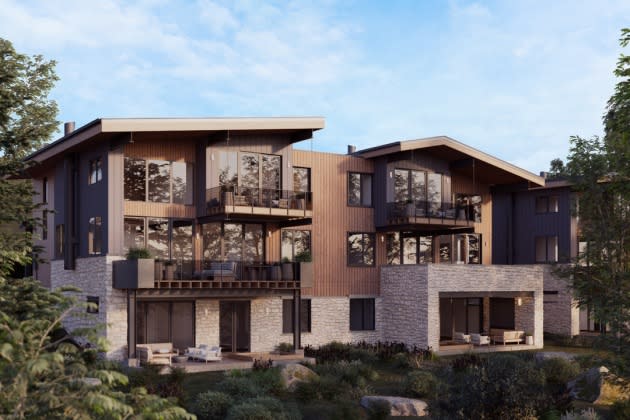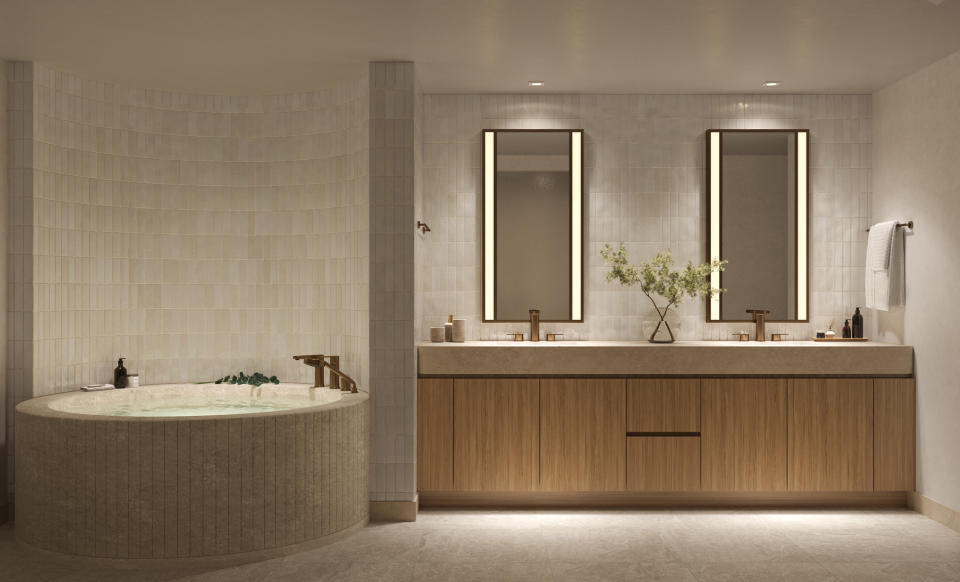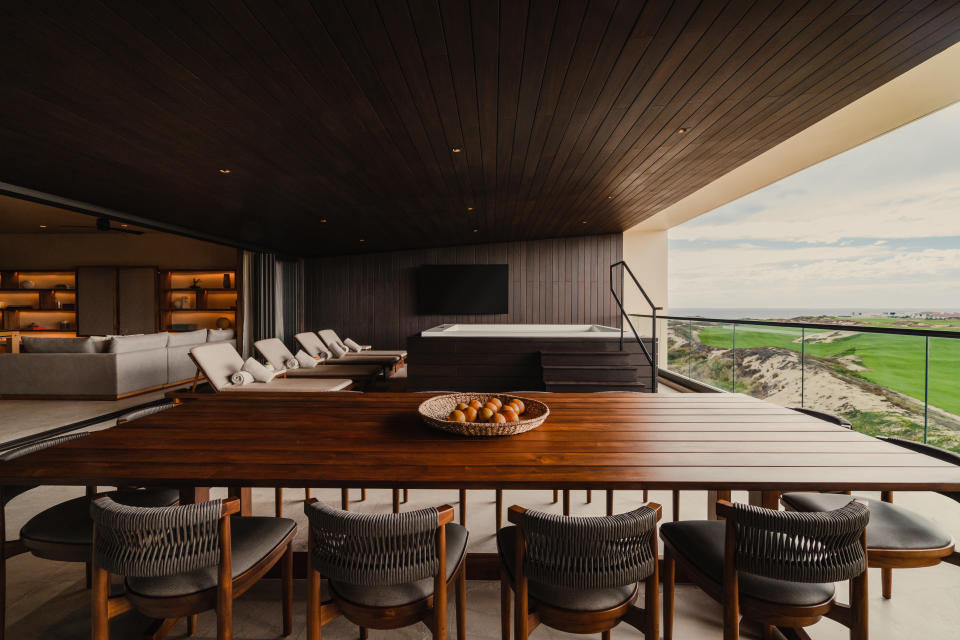Home Is Where Wellness Is

These days, wellness is hitting home. Literally.
More from WWD
Sephora to Bring Immersive Sephoria Event to New York This Fall
EXCLUSIVE: L'Oréal and Verily Go Deep With Research Study on Skin and Hair
As affluent consumers become increasingly health-conscious, residential wellness communities are gaining traction among developers and traditional hospitality brands.
For example, The Well, an East-meets-West wellness center, is working with development company Terra Real Estate to open a property at Bay Harbor Islands in Miami in December 2024, with more than 22,000 square feet of health amenities. The mixed-use residential development will bring The Well’s signature offerings, like health coaching and saunas, to the community along with features like a bath house and infrared and sound dome. The units, which start at $1.3 million, are also thoughtfully designed with wellness in mind including features like herb gardens, Zen meditation nooks, whirlpool tubs, waterfall showers and full-body red light therapy vanities.

“During COVID[-19], our phone started ringing off the hook with developers saying, ‘Consumers are looking to us to say, how are you making our homes healthy? How are you making our offices healthy? How are you making your spaces healthy?,’ something that had been considered a bit niche before,” said Kane Sarhan, cofounder of The Well. “Where we found the opportunity was, it wasn’t enough to make your air clean and water clean… Consumers also wanted the software, the programming. They wanted classes and treatments and they really wanted to be able to integrate wellness, not just through design, or through physical spaces, but also through actual services and lifestyle. They wanted to be able to live this way day in and day out.”
On the hospitality side, The Well has maintained an ongoing partnership with Auberge Resorts Collection, and is now diving much deeper on the residential side of real estate.
“We think the biggest opportunity is in this residential space,” Sarhan said. “We want to help people make wellness part of their every day and so we really see the opportunities to meet people wherever they are, where they are on vacation, where they work, where they live… Almost exclusively all of our future projects have a residential component.”
While overall construction output decreased during COVID-19, wellness real estate experienced continued growth. Between 2019 and 2020, the global wellness real estate market grew more than 22 percent, according to the Global Wellness Institute, outpacing expectations. The organization predicts continued growth, bringing the global market to $580 billion by 2025, driven by consumer shifts caused by the pandemic. Currently, wellness real estate makes up 2.4 percent of global annual construction output.
“Wellness is absolutely now a true purchase motivator,” said Teri Slavik-Tsuyuki, cochair of the Global Wellness Institute’s Wellness Communities & Real Estate Initiative, assistant chair of the Urban Land Institute’s Residential Neighborhood Development Council and founder of the America At Home Study. “It was the number-one reason why consumers who responded to our [the America At Home Study] survey said they wanted to invest in certain sustainable and healthy home features. It beat out ‘saves me money.’ ‘Improving my health and wellness’ was the number-one purchase motivator.”
Furthermore, the organization’s surveys show that consumers are most concerned about mental health and well-being. While early wellness initiatives in the built environment were focused on features like clean air and sustainable building with certifications like Well and LEED, the social component is expected to become as essential.
“We need to think about wellness in the built environment beyond just the physical structures we create, but in a much more complete way. Think about things like social engagement and social activation in our homes and communities,” said Slavik-Tsuyuki.
While wellness is often marketed toward affluent consumers, experts suggest developers address a wider consumer base when it comes to real estate, as the demand for healthy homes and communities increases.
“How are we developing homes that are financially attainable and the right size for the diversity of people that are buying homes? It needs to start from the land up and not from the building down,” said Slavik-Tsuyuki.
As residential wellness is growing, three key trends are driving the category, including full-time and long-term concepts from traditional wellness providers, conceptual development communities and in-home options.
For example, Six Senses offers residences at several of its properties globally including Fiji, Belize, Dubai and Courchevel, where guests can live while enjoying the wellness amenities of the resort. Sha Wellness Clinic founder Alfredo Bataller started real estate development firm AB Living Group to focus on residences. Its first project, which is slated to open in 2025, is the St. Regis Costa Mujeres, which will house 82 residences with access to the clinic’s amenities including medical practitioners, mediation, yoga, private chefs, beauty treatments and wellness treatments.
For wellness resort Canyon Ranch, the consumer desire for immersive well-being is driving the real estate trend. Consumers have “this desire to step away from their busy lives, to engage in an immersive experience to whatever extent they can,” said corporate director of transformational experiences Jim Eastburn.
While the resort has housed residents at its Tucson, Arizona, location for several years, it also recently added 19 condos to its Lenox, Massachusetts, location, which range in price. Canyon Ranch memberships cost between $40,000 and $75,000 a year. Eastburn expects residential offerings will continue to be a conversation for the resort going forward, as guests have become increasingly interested in longer retreats for a deeper wellness experience.
“Opportunities for residential living, what we call Canyon Ranch Living, are certainly there,” Eastburn said, noting they are focused on offering everything from short retreats to memberships to residences. “It’s the portfolio that says, ‘Where are you? What do you need?’ and ensuring that at each level of those experiences, we’re meeting anywhere you need. That’s the future of Canyon Ranch. We continue to move forward, offering different levels of entry and experience.”

With consumers looking for more immersive experiences, Nobu Los Cabos recently opened its Residences, which offer longer-term stays in one- to four-bedroom units with amenities including pools, fitness areas and a private spa. Starting rates begin at $1,600 a night.
“There is an overall consumer interest in wellness experiences and even more in the luxury market,” said Ash Tembe, vice president of sales and marketing at AIC Hotel Group. “Nobu Residences Los Cabos offers a more exclusive atmosphere apart from the normal hustle and bustle of a standard resort vacation. The ‘home away from home’ concept was created with the intention of offering the consumers the option to immerse themselves in luxury while keeping the comfort of a home.”
While wellness and hospitality providers are looking to build their own versions of residences, wellness-oriented developments and communities are also on the rise.
Serenbe, a well-being-centric residential community near Atlanta, was one of the early adopters of the concept, when it opened in the early 2000s. Current Serenbe residence listings cost upward of $2.195 million. While the development has been around longer, it includes many of the key wellness features consumers are seeking from homes today, including community offerings, walkability, nature, farm-to-table dining and clean home setups — think water and energy conservation technologies.
“We’re sicker and more depressed than we’ve ever been and we’re not looking at the built environment as one of the prime causes. That’s where a lot of it comes from,” said Steve Nygren, founder and chief executive officer of Serenbe.
Reports from the Global Wellness Institute support this notion, as it cites that 85 percent of health outcomes are determined by the built environment and people spend on average 62 percent of their time at home.
“If we’re spending 62 percent of our time in and around our homes, then how they work to support our health and well-being is more critical now than ever before,” said Slavik-Tsuyuki.
While Serenbe maintains more than 650 residents, the brand isn’t thinking about scaling but rather educating similar properties as developers double down on wellness real estate. Nygren said developers often visit Serenbe to learn about specific features. Nygren has recently launched a consultancy for developers to help new entrants to the market.
New wellness community developments are also in the works. For example, Magleby Development is building Velvaere, a ski-in, ski-out residential wellness community in Park City, Utah, set to open in 2024. The team has partnered with an array of wellness-oriented companies to enhance the healthy experience. Specifically, each residence will have a Delos Intellipure Super V for air purification, an AeroBarrier to ensure energy efficiency, a HaloIR Sauna and Lutron’s intelligent lighting controls.
“Can we be more intentional and thoughtful around what I call nudge-based architecture, nudging us into living in a way that affects our health,” said Chad Magleby, president and CEO of Magleby Construction.
Aside from the in-unit technology, the development will offer community-based activities like forest bathing, music therapy, meditations and fitness classes in an effort to promote social interactions.
“One of the big challenges that we face as a society is this pandemic of loneliness,” said Magleby. “We’re dragging people out of their homes and architecting opportunities for them to engage.”
The community will also offer a slew of wellness treatments and therapies including cupping, acupuncture, microbiome and biohacking courses, sleep programming and more. Similar to Serenbe, the Velvaere team is focused on educating other properties, though will look to scale once the model is solidified.
It’s not just the luxury market that is seeing a boom in wellness real estate. More accessible options are also being developed. For example, Zeal for Living is aiming to offer similar amenities like clean building standards and social components through a more accessible rental model. The development is in production in Sherman, Texas; the team has not released expected rental pricing for residences.
While consumers can move to one of these communities, brands like social wellness club Remedy Place are also aiming to bring some of the offerings to preexisting homes. For the brand, it’s about offering affluent clients the opportunity to bring treatments like hyperbaric chambers, infrared saunas and ice baths home through its Remedy Rooms, which cost $500,000.
“People are realizing that self care isn’t that once-in-a-while thing. People are coming every single day and life’s stressful, and the only way to counteract it is to actually do self care experiences that will counteract those stressors. It’s really just based on demand,” said Dr. Jonathan Leary, founder and CEO of Remedy Place.
However, with many of the residential real estate projects coming to market, the social aspect is key. While Remedy is bringing wellness solutions to the home, maintaining community is essential.
“It’s a designated environment of your home that you can have all this self-administered self care, and you can either do it alone, or you could do it with your partner or it’s a new way to entertain,” said Leary. “Anything at home as a primary and only is not a good idea. Being isolated, being at home, not being around different communities or different environments eventually has a negative impact on your health.”
As the global wellness real estate category continues to expand, health-centric amenities won’t be a perk but rather a consumer expectation.
“The expectation is very quickly coming that any new project is going to have to have a level of focus on health and well-being,” Sarhan said.
While developers and wellness brands are focusing on building luxury and affordable health-oriented residences, experts don’t expect the category to slow down anytime soon.
“This is what consumers are demanding and it’s only going to continue to grow,” said Slavik-Tsuyuki.

